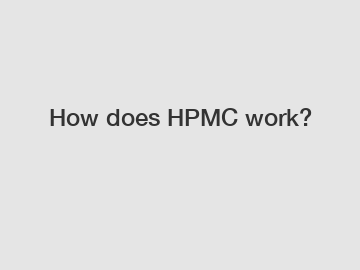How does HPMC work?
How does HPMC work?
Hydroxypropyl methylcellulose (HPMC) is a widely used cellulose-based polymer in various industries, including pharmaceuticals, cosmetics, and construction. It works primarily as a thickener, binder, and film-former due to its unique chemical structure and properties.
HPMC is derived from cellulose, a natural polymer found in plants. Through chemical modification, hydroxypropyl and methyl groups are introduced into the cellulose backbone, which increases its solubility in water and enhances its properties. When HPMC is added to a solution, it undergoes hydration and swells, forming a gel-like structure that thickens the solution. This thickening effect is crucial in many applications, such as in pharmaceutical formulations to achieve the desired viscosity for suspensions or solutions.

Furthermore, HPMC's binder properties are attributed to its film-forming ability. When HPMC dries, it forms a transparent and flexible film on the surface, providing a protective barrier and enhancing the durability of the material. This feature is essential in the construction industry, where HPMC is used as a key ingredient in mortar, tile adhesives, and gypsum plaster to improve workability and adhesion.
The efficacy of HPMC in various applications has been extensively studied and proven through scientific research and experiments. Different grades of HPMC can be tailored to specific requirements, such as viscosity, hydration rate, and film-forming properties, making it a versatile ingredient in formulations. Moreover, HPMC is known for its biocompatibility and safety, making it suitable for use in pharmaceuticals and cosmetics.
In conclusion, the versatility and efficacy of HPMC make it a valuable ingredient in a wide range of industries. Its thickening, binding, and film-forming properties are essential in numerous applications, from pharmaceutical formulations to construction materials. Through ongoing research and development, HPMC continues to evolve and expand its uses, contributing to innovation and advancements in various fields.
Want more information on polypropylene fibres, gypsum retarder, ceramic adhesives hpmc exporter? Feel free to contact us.
12
0
0

Comments
All Comments (0)